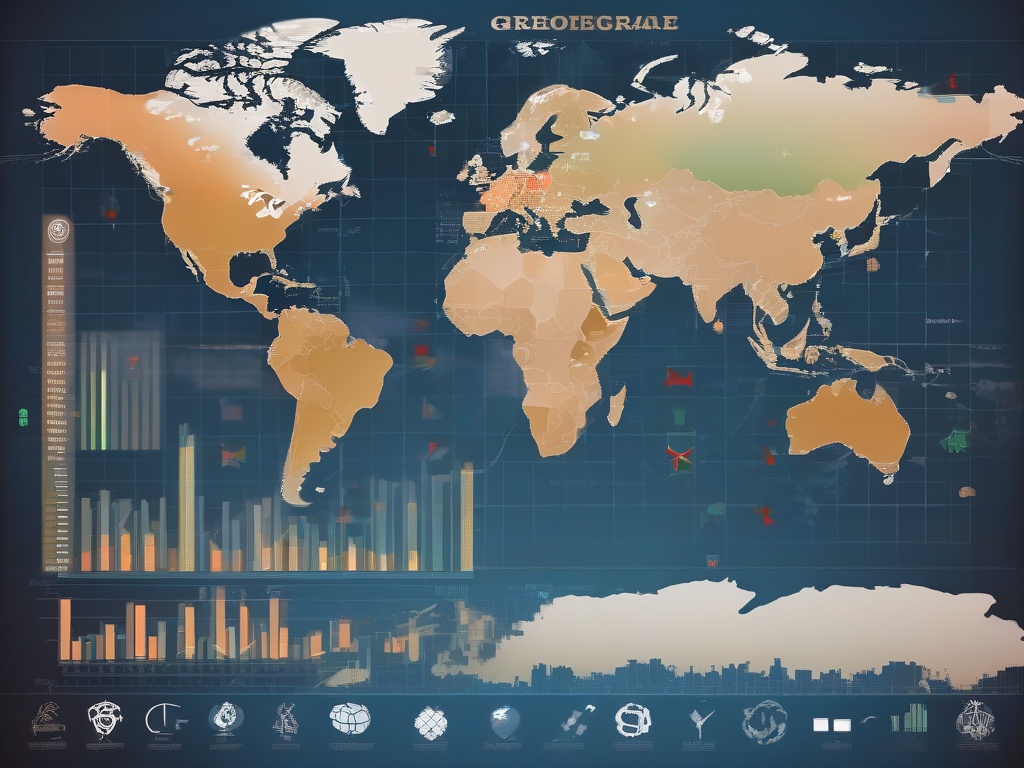
Unveiling the Global Power Play: How Geopolitical Tensions Reshape Investment Landscapes
In an era where geopolitical shifts happen at a lightning pace, investors find themselves navigating a complex, often unpredictable terrain. The delicate balance of power among nations influences everything from currency valuations to commodity prices, creating ripple effects that can either bolster or devastate investment portfolios. Understanding the intricate dance of international relations is no longer optional but essential for those aiming to safeguard and grow their wealth amidst global uncertainties.
Geopolitical tensions manifest through trade wars, sanctions, military conflicts, and diplomatic disputes, each leaving an indelible mark on financial markets. These tensions can trigger sudden volatility, prompting investors to reconsider traditional assumptions about stability and growth. Being attuned to these shifts allows for strategic repositioning, turning potential threats into opportunities. Recognizing the patterns and implications of these tensions is akin to possessing a geopolitical compass—guiding investments through turbulent waters toward calmer, more promising horizons.
The Power Dynamics and Investment Strategies in Turbulent Times
As global powers assert their influence, the resulting geopolitical landscape becomes a chessboard of competing interests. Major conflicts or alliances may lead to sector-specific impacts; for instance, energy markets often react sharply to Middle Eastern tensions, while technology stocks can be affected by regulatory crackdowns driven by international disputes. Investors must adopt a nuanced approach, diversifying portfolios to hedge against sector-specific shocks and incorporating geopolitical risk assessments into their decision-making process.
Furthermore, proactive engagement with emerging markets that are less entangled in global conflicts can offer new avenues for growth. Investors who can interpret geopolitical signals effectively and adapt their strategies accordingly not only protect their assets but may also capitalize on market dislocations created by geopolitical upheavals. This dynamic approach transforms geopolitical awareness from a mere risk factor into a strategic advantage, empowering investors to navigate the ever-changing landscape with confidence and foresight.
Strategic Shielding: Navigating and Mitigating Risks in a Volatile Geopolitical Arena
Anticipating the Storm: Building a Resilient Investment Framework
In an environment marked by unpredictable geopolitical maneuvers, a proactive approach is paramount. Developing a resilient investment framework involves diversifying across asset classes, geographies, and sectors, which acts as a buffer against localized shocks. By integrating geopolitical risk assessments into your strategic planning, you can identify potential vulnerabilities before they materialize into losses. This foresight enables investors to craft flexible portfolios capable of withstanding sudden upheavals, providing a crucial edge in turbulent times.
Hedging Against Global Disruptions: Tactical Measures and Instruments
Effective risk mitigation often hinges on tactical financial instruments tailored for unstable geopolitical climates. Currency hedges, options, and futures serve as vital tools to guard against adverse currency fluctuations and commodity price swings. Implementing these measures requires a nuanced understanding of market signals and geopolitical indicators, allowing investors to lock in favorable rates or protect gains. Such tactical maneuvers transform potential vulnerabilities into strategic advantages, ensuring that geopolitical tremors do not erode overall portfolio stability.
Monitoring and Adaptive Strategies: Staying Ahead of the Geopolitical Curve
Ultimately, navigating a volatile geopolitical landscape demands continuous vigilance. Real-time monitoring of international developments, diplomatic shifts, and economic sanctions provides critical insights into emerging risks and opportunities. Adaptive strategies that evolve with the geopolitical terrain—such as reallocating assets, adjusting risk exposures, or exploring emerging markets—are essential for maintaining a competitive edge. Investors who embed agility into their decision-making processes can not only mitigate downside risks but also seize fleeting opportunities in a rapidly changing world.
Seizing Opportunities Amidst Turmoil: Turning Geopolitical Disruptions into Investment Advantages
Harnessing the Winds of Change: Transforming Disruption into Strategic Growth
In the midst of global upheavals, opportunities often lie hidden beneath the surface of chaos. Savvy investors understand that while geopolitical tensions can cause short-term volatility, they also create openings for strategic repositioning. For instance, sectors impacted by geopolitical friction—such as defense, cybersecurity, and renewable energy—may experience accelerated growth, presenting avenues for lucrative investments. By maintaining a vigilant eye on emerging trends and regulatory shifts, astute investors can position themselves ahead of the curve, capitalizing on market dislocations that others may overlook. This proactive stance transforms turbulence into a fertile ground for building resilient, high-potential portfolios.
Investors who leverage geopolitical disruptions as catalysts rather than obstacles can diversify their holdings into resilient assets. Countries or industries less exposed to geopolitical conflicts tend to serve as safe havens, while emerging markets with potential for rapid development become attractive targets. Moreover, strategic use of financial instruments—such as options and futures—can amplify gains during volatile periods, turning uncertainty into a calculated advantage. Ultimately, the key lies in understanding the nuanced interplay of geopolitics and market dynamics, enabling investors to seize fleeting windows of opportunity that can redefine their financial future.
Strategic Positioning and Adaptive Investment Approaches
Seizing opportunities amidst global turmoil requires a mindset that is both flexible and forward-looking. Instead of reacting impulsively to headlines, investors should adopt a disciplined approach rooted in thorough geopolitical analysis and market intelligence. This involves continuously reassessing geopolitical risks and adjusting asset allocations to align with evolving realities. For example, shifting focus toward regions with stable political climates or investing in sectors poised for growth due to new policies can generate substantial returns. By staying adaptable and informed, investors can not only mitigate risks but also harness the momentum of change—transforming volatility into a strategic advantage that propels long-term growth.
Furthermore, engaging with emerging markets that are less entangled in geopolitical conflicts offers a dual benefit: diversification and growth potential. These markets often present unique opportunities for early entry into sectors such as technology, infrastructure, and consumer goods, which are poised to benefit from global shifts. The ability to interpret geopolitical signals and act swiftly is what differentiates successful investors from the rest. In this landscape of uncertainty, those who embrace agility, leverage innovative financial tools, and maintain a global perspective will find themselves at the forefront of the next wave of investment success, turning geopolitical chaos into a catalyst for prosperity.
